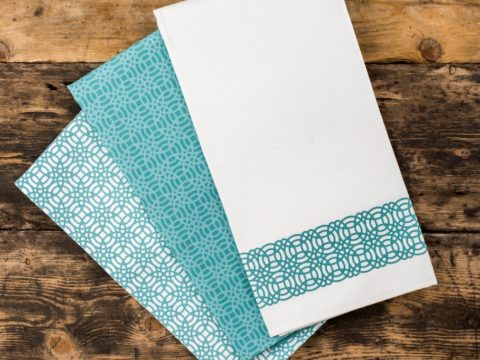Anne of Brittany: Life Story
Chapter 3 : Queen of France
Charles, accompanied by Anne of Beaujeu, entered Rennes, and had a private meeting with Anne, which lasted several hours. Three days later, with all her resistance overcome, Anne, still only fourteen, was betrothed to Charles (aged twenty-one) in the chapel of Notre Dame at Rennes. Shortly after, the marriage ceremony took place at the Chateau of Langeais, near Tours.
Anne’s former allies were stunned, but had only themselves to blame – Maximilian had been dilatory in claiming his bride, and Henry VII, concerned about Charles’ support for the pretender, Perkin Warbeck, had not been notably active in defence of his old ally. It was reported by Maximilian’s advisors to the Pope, that Anne was being married in defiance of her own wishes, and only after she had been raped by Charles. Whether that was true or not, Anne, faced with a fait accompli, denied the shameful suggestion that she had been violated, and swore (in front of a French ecclesiastical panel) that she freely consented to the marriage.
Although Anne had had insufficient money to pay her mercenaries, leading to the necessity of the marriage, enough money was found, possibly by the raising of taxation, to equip her to impress the French court. She travelled to Tours in her own coach (a very early example of such a vehicle), with the horses trapped in twelve yards of black velvet and three of red. She herself was dressed in a gown of black velvet and satin, costing over 60,000 francs, and swathed in a velvet cloak, trimmed with 139 sable pelts.
Beds were moveable articles, and Anne took two with her: one was draped with black, white, violet damask and red taffeta, the other had hangings of gold-embroidered crimson, with violet cloth-of-gold ornamentation and a black silk fringe, with the canopy lined with blue taffeta. (Neither sound conducive to a quiet night’s sleep!). The combined cost of these fabrics was in the region of 120,000 francs.
Even more extravagant was Anne’s wedding dress – of ‘drap d’or trait-enlevé’ – a type of figured cloth-of-gold, at 7,350 francs the yard, trimmed with sables. Her Breton attendants, too, received expensive new clothes.
Anne was described on her wedding day by Octavien de Saint-Gelais, later Bishop of Angoulême, as ‘…beautiful, young and full of graces, so that it was a pleasure to look upon her'.
Now Queen of France, Anne travelled to Paris, alongside her husband, to be crowned at St Denis on 8th February 1492, followed by her official entry into the capital. At the coronation ceremony, the crown, too large and heavy to be worn, was held over her head by Louis of Orléans. Anne of Beaujeu attended her. Not surprisingly, Anne did not get on well with her new sister-in-law, who had been the driving force behind the annexation of Brittany. She took every opportunity to demonstrate her superior rank, as Queen of France, over Anne of Beaujeu, merely Duchess of Bourbon.
Although Anne was well-received in Paris, she apparently expressed a preference for a more rural location, and Charles ordered that his favourite chateau at Amboise be refurbished for her. It may have been Anne’s choice, or it may be that he preferred her to be away from the political centre of the kingdom, although Amboise is not far from the border of Brittany, so, presumably, he did not anticipate that she would try to return home.
Now that Charles had taken hold of Brittany, another prospect was tempting him – the kingdom of Naples. To pursue his ambitions there, he needed to restore peace on his borders. He pacified Henry VII of England with the Treaty of Etaples, by which he agreed not to countenance pretenders to the English throne, and to reimburse Henry’s costs at 50,000 écus per annum. In return, Henry accepted the cession of Brittany to France. Spain, too, was mollified with the return of the disputed provinces of Roussillon and Cerdagne.
Maximilian received nothing but the return of his daughter, Marguerite, who never forgave the humiliation she had borne at the hands of the French. Anne, probably sorry for Marguerite, only three years her junior, also a pawn in the hands of more powerful people, gave Marguerite valuable gifts on her departure. Marguerite went on to marry Juan, Infante of Spain, then the Duke of Savoy, before becoming Governor of the Netherlands and a powerful force in European politics.
It is impossible to know the state of Anne and Charles’ personal relations. It hardly seems likely that Anne began her marriage happily, but, once married, they were constantly in each other’s company – whether for personal or political reasons.
Anne’s first child was born on 11th October 1492, a son, named Charles. He was christened three days later, his godparents all robed in gold. Anne ordered a rattle of silver-gilt and sea-shell (presumably mother-of-pearl).
The ceremony and protection which surrounded the little dauphin were astonishing. He lived mainly at Amboise, whilst Anne and Charles were obliged to move around the kingdom, as was the practice of mediaeval and Renaissance monarchs. The dauphin was surrounded with guards, and no-one was allowed to come into his presence without a clean bill of health. Despite these precautions, the dauphin died, aged three, and none of Anne and Charles’ other children survived long beyond birth.
